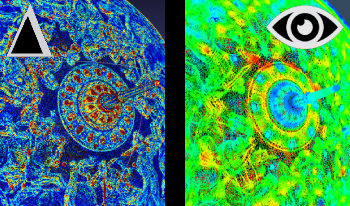
Selecting the optimal resolution and post-processing techniques of 3D objects for cultural heritage documentation is one of the most distinguishable challenges within 3D imaging. Many techniques exist to document a tangible object at very high objective accuracy, but there also exist techniques that can visualize a similar perceptual accuracy without documenting the objective values. The application difference between storage of complex geometric data and the visualization of it could be fundamentally different, and if the two methods are not disassociated it could lead to either false or inaccurate digital documentation of a cultural heritage object. In this investigation we compare several different metrics for evaluating the quality of a 3D object, both objectively and perceptually, and look at how the different approaches might report greatly different outputs based on the post-processing of a 3D object. We also provide some insight in how to interpret the output of various metrics, and how to compare them.
Markus Sebastian Bakken Storeide, Sony George, Aditya Suneel Sole, Jon Yngve Hardeberg, "3D Object Quality Metrics and their Differences: How Can We Evaluate Quality of Digitization?" in Archiving Conference, 2024, pp 81 - 87, https://doi.org/10.2352/issn.2168-3204.2024.21.1.17
 Find this author on Google Scholar
Find this author on Google Scholar Find this author on PubMed
Find this author on PubMed